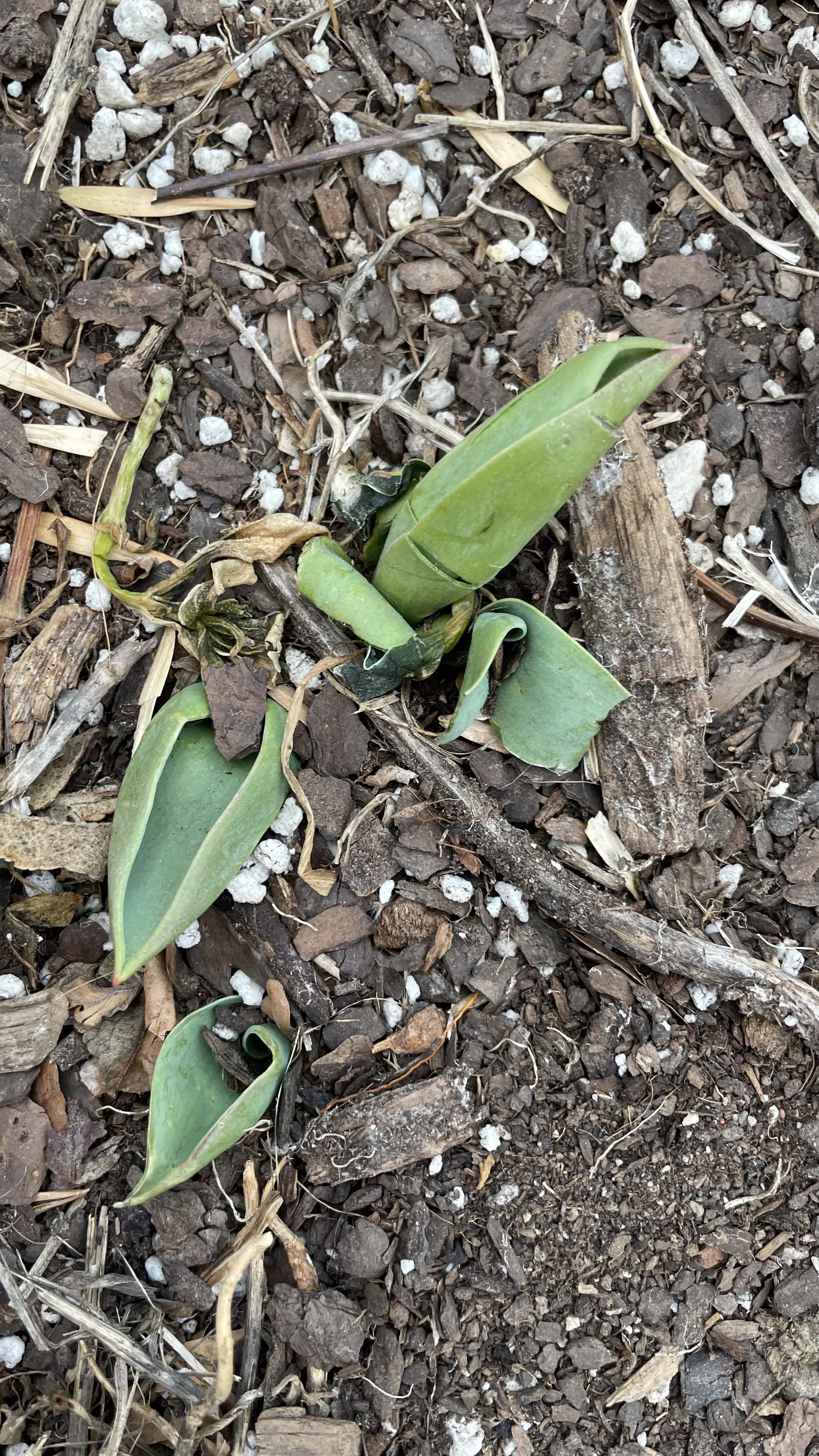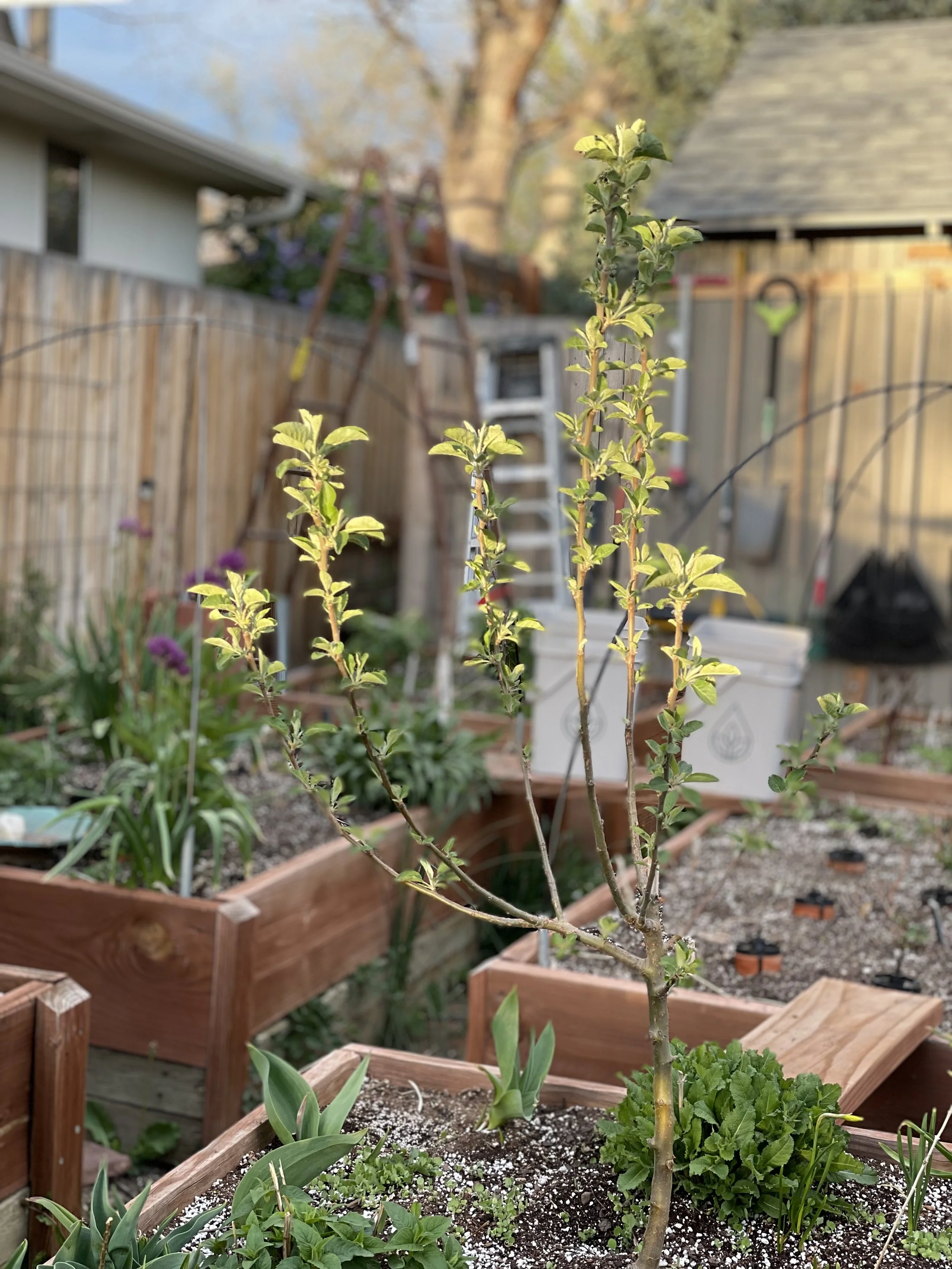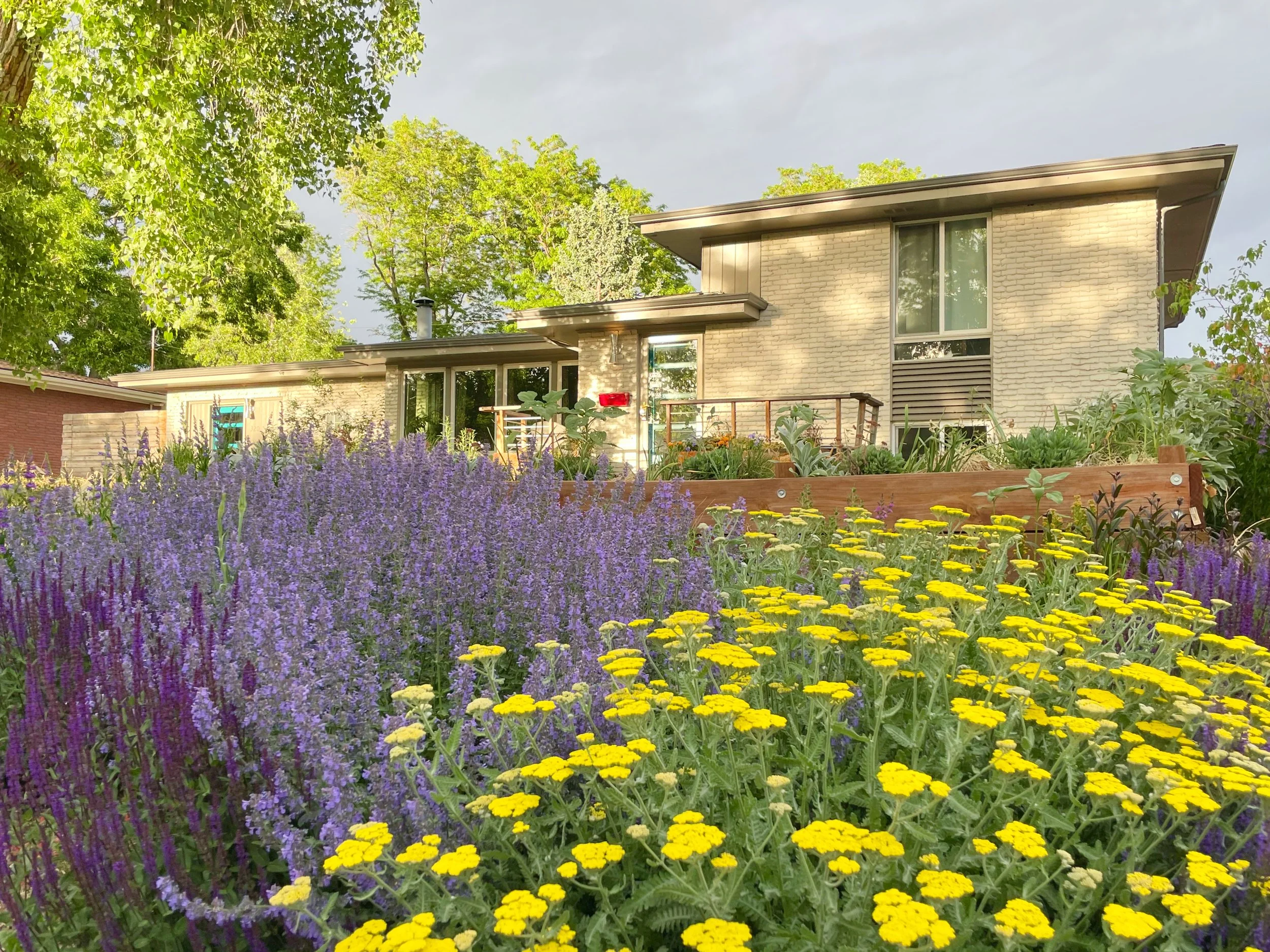Gardening Checklist for the First Week of March, 2025
You guys! The first tips of tulips have poked through in the Cutting Garden, and I'm just delighted. Right on schedule for the first week of March here! We should have daffodil blooms by the end of the month which will be soooo welcome. I know some of you are in full bulb and Camellia bloom by now, and others are still looking at fields of snow. We have this odd mix here in Colorado – March is our snowiest month, but between snow storms we also have glorious warmer days and sunshine. So it is well and truly time to start getting the garden going – even if it's only baby steps.
With that in mind, here is your Weekly Gardening Checklist for the First Week of March:
Order & Plant Bare Root Fruit Trees
As a young person, my favorite books were the Anne of Green Gables series. And my fantasy house always had flowers to cut and apple trees to pick from. Well, I am all about fulfilling fantasies, and a few years ago I planted a small orchard along one side of our house. It's been a wonderful adventure so far. No fruit, but MAYBE some this year. Afterall, planting a tree is truly playing the long game.
I wouldn't have thought that I could fit 16 fruit trees into my little yard, but then I remembered Ann Ralph's book, Grow a Little Fruit Tree. I heard Ms. Ralph speak years ago when we lived in Sacramento, California. She is a Bay Area author and gardener, and she is one of the people behind the Backyard Orchard Culture movement – advocating that everyone can and should have fruit trees in their yards. AND by keeping the trees small – and I do mean very small – that makes them more productive and more manageable.
So I am here to tell you: yes! You, too, can have a small orchard or one apple tree or delicious pears, and it isn't very hard at all!
The key to establishing a healthy fruit tree is to start with a one year-old whip – a bareroot tree that is very, very young. They are cheaper and will establish faster than a potted tree at a nursery. I bought mine from Trees of Antiquity, but you may live in a part of the world where your local nurseries carry them. And if you are in a warmer part of the world, they may be in your nurseries now.
You can plant bare root trees when the soil is still cool, but not frozen. Here we plant them in April.
So consider adding a fruit tree – or a few – to your garden! They can add shade. They bloom. They add height and structure. And, of course, they will have fruit eventually, too!
Time to Start Tomatoes
Ok. It's the time many people have been waiting for! If you are going to only start one thing from seed, I highly recommend that it is tomatoes! They are easy, fun, and tasty, too!
If you are growing from seed, here are a few tips for you:
Light: tomatoes are tropical plants at heart, so they need LOTS of sunlight to germinate and grow on well. I use grow lights, because I simply don't have enough reliable light even in the greenhouse to get them to start well. Once they get taller, I take them out of the light trays, and they do just fine on their own.
Heat: tomatoes also really like heat, and they don't like the cold. So I start my seedlings on heat mats. Once I started using heat mats, I had MUCH better results. They just keep the soil temperature much more consistent. An inexpensive heat mat does wonders!
Seed-Starting Mixture: baby plants don't need much nutrition, but they do need a soil mixture that is light, fluffy, and that will support good germination. Here's my recipe for a peat-free mixture that works every time!
Start More than you Need: I always start a tray of 6 plants per type of tomato. That seems a little overboard, and it probably is –I can always give away plants! But they won't all make it. So I always start more than I will need. I usually end up planting 2 of each variety, but I start with 6 of each variety. That way I have backups just in case! And my neighbors love getting free starts, too!
Use Humidity Domes: whether you make them yourself (Saran Wrap works well), or use pre-made humidity domes, they are a game-changer! Keeping the moisture enclosed until your little seedlings are an inch or two tall gives them a better shot at life by ensuring that they don’t dry out.
Try something different: every year I try a new or different variety just for fun! I love to experiment! So don't just stick with your tried and true – find something you've never grown, too!
Bottom Watering: put whatever you are starting seeds in inside a tray and fill that tray with water. This is called bottom watering, and it is soooo effective with seeds and seedlings. Keeping the soil of each seed tray consistently moist but not soaking wet will give you the best results.
These same tips hold true for starting peppers and cucumbers, too. And it's time to start them as well. For more about my favorite seed-starting supplies, check out this link:
Happy seed starting!!
Plan for Blooms Every Month
One of the best ways to support pollinators and a healthy local ecosystem is to plan your garden for blooms every month. Whether you are Team Veggie or Team Flowers (or Team Both, like me), your garden can support pollinators, and providing food for them for as many months of the year as possible is critical.
So as you think about what flowers you will plant, consider their bloom times in your plan. My goal is to have flowers blooming from mid-March to late-October. Maybe you have a longer season – or shorter. For me, that is possible by relying on native plants and spring bulbs and mapping out their blooming sequences.
Last year I did a flower audit. I documented what was blooming when, and I kept an ongoing list. The results were fascinating! I found a few holes which I am going to work to plug this year – so that is shaping my own planting plan. And it made me pay attention to every flower that came into bloom over the year.
You can read more about what I did, how I did it, and what I learned here – and get a list of my plants and when they bloomed, which might be helpful as you plan your gardens this year.
And that is your Weekly Gardening Checklist!
Subscribe to my Substack to get the Weekly Gardening Checklist and so much more in your email box every week!





